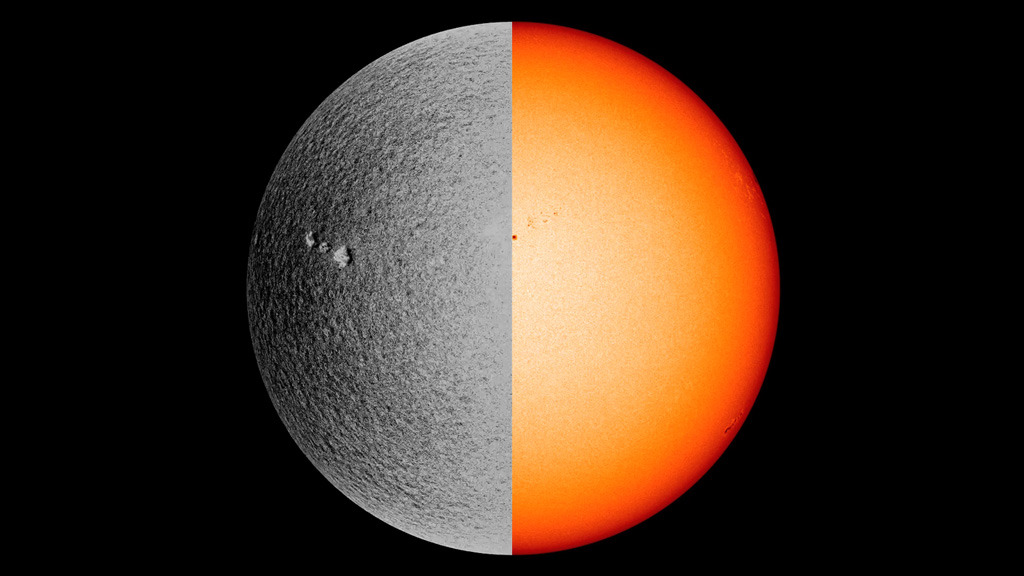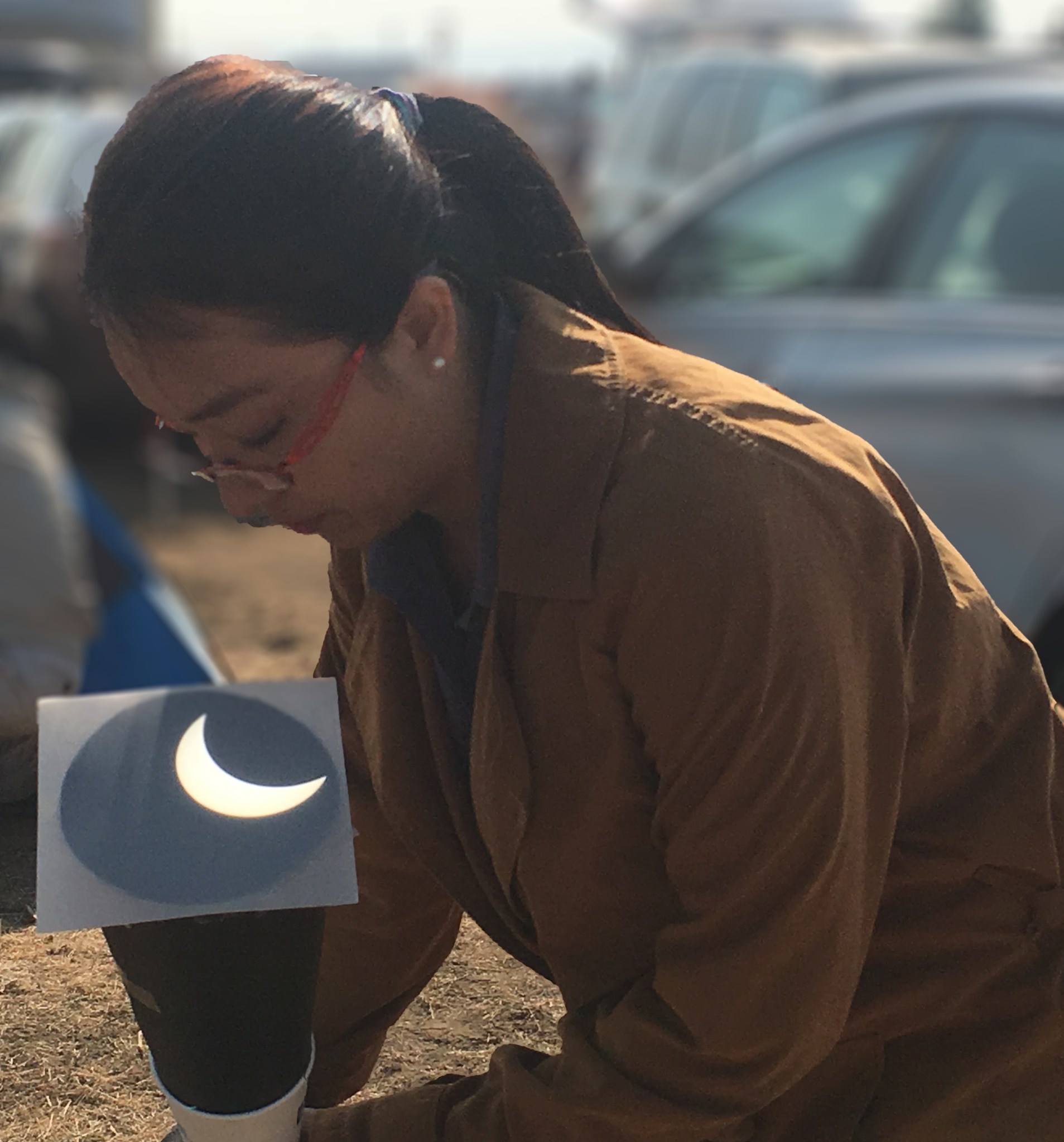How do we study the structure of something we can’t observe directly? One way is by analyzing how waves travel through it. That’s how we probed the interior of Earth. We learned about its density, temperature, and composition by studying the seismic waves that earthquakes and other large-scale disruptions produce.
This same technique we use to study the Earth beneath us helps us visualize something 93 million miles away: our Sun. A branch of solar science called helioseismology uses wave measurements to understand the interior structure and far-side surface of our Sun. The Helioseismic and Magnetic Imager aboard NASA’s Solar Dynamics Observatory is a primary source of the data helioseismologists use to help model our star. The instrument collects information on the motion of gases at the Sun’s surface.
Dr. Ruizhu Chen is a helioseismologist at Stanford University in Stanford, California. She loves studying the Sun because it affects life on Earth and because there are mountains of data available, which she uses to piece together the Sun’s structure.
(The following interview has been edited for length and clarity.)
What is helioseismology?
The Sun is a hot plasma ball, and its surface oscillates much like the surface of boiling water. Helioseismology involves tracking and analyzing the waves that cause this oscillation to reveal information about the Sun’s interior.
There are two general approaches to studying helioseismology. Global helioseismologists think of the Sun as a closed cavity. The Sun’s physical properties like interior density and temperature determine the vibration patterns of waves inside the cavity. By studying those patterns, helioseismologists can infer what the Sun’s interior is like.
The other approach is to analyze how waves travel through the Sun. Time-distance helioseismology, which is what I do, involves measuring and tracking how long it takes waves to travel across certain regions of the Sun. The interior structure affects how waves travel through, so we can use that information to infer the structure and flows inside the Sun.
What data do you use?
We have both ground-based and satellite-based observations. One of the most-used data sources is NASA’s Solar Dynamics Observatory. There is an instrument on board which measures the Doppler effect – that same effect that you notice on Earth when a siren’s pitch changes as it passes. The Sun’s surface bubbles, so at one time a section might be moving toward us and other times away from us. If we measure the Doppler effect, we can see those movements and obtain maps, called Dopplergrams, of solar surface activity.

What can helioseismology teach us about the Sun?
It can be used to understand and predict the big picture of the Sun’s evolution. One of the major questions in solar science is what future solar cycles will look like. Solar cycles are the 11-year cycle of the Sun’s magnetic activity. How is the magnetic field generated, and why does it have this 11-year period? And how is this period maintained? What causes variation from cycle to cycle? These are the big questions we’ve been studying for decades. For these studies, we need information – the more precise the better – about the interior structure of the Sun. That’s where helioseismology steps in to provide constraints and information about the interior.
We can also use helioseismology to pinpoint and monitor active regions of the Sun which could produce solar eruptions like flares that might affect us on Earth. We can figure out whether there are large active regions forming on the far side of the Sun – which we cannot observe directly – before they rotate to the visible side. This gives us some power of prediction.
How did you decide to become a helioseismologist?
I like exploring the world from a physics perspective. I majored in astronomy in college, and then I did rotations in a few groups in astrophysics when I started graduate school at Stanford. Some involved lab work, like testing instruments. I also did some simulation work related to farther away stars and galaxies. But in the end, I chose solar physics as my research field.
I love studying the Sun because we have so many detailed observations and measurements available. That makes it the best place for us to understand how stars in our universe work. Looking into helioseismology data feels like puzzle-solving or treasure-hunting. It’s exciting to dive in each day and find new questions and think about ways to answer them. The process is interesting and sometimes frustrating. But when you learn something – even if it’s that you can’t do something or don’t understand something – that’s always interesting.
Also, the Sun affects our daily life and our Earth. I feel happy to contribute to our understanding of something so important to humans.
How does your work as a solar scientist affect how you think about the world and our place in it?
The “standard” answer is that the vastness of the universe makes people feel how humble and small we are. I think every astronomer will feel like that. And because the Sun is relatively close, it’s a combination of feeling that the Sun is so much larger than everything on Earth, while so much smaller than the vast universe. You see it and feel it every day, and you know it’s there. I have the mixed feeling of studying something both far away and familiar.
What advice do you have for someone interested in pursuing a career in research?
As I continue my career in this field, the more I feel that the interest in solving puzzles, in understanding the world, the love, and the curiosity are the most important things in doing research. It is the curiosity that gives you the power to go through the frustration and all kinds of challenges. If you have inner curiosity, that will protect you. That will motivate you to solve puzzles and keep you enthusiastic. Always explore different ideas and keep learning new things.
By Anna Blaustein
NASA’s Goddard Space Flight Center, Greenbelt, Md.






























